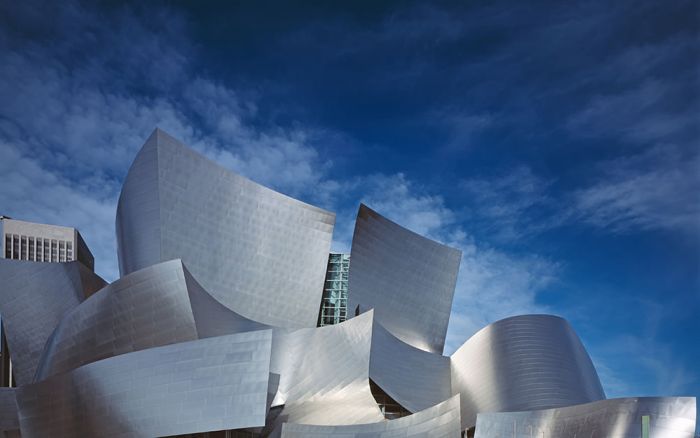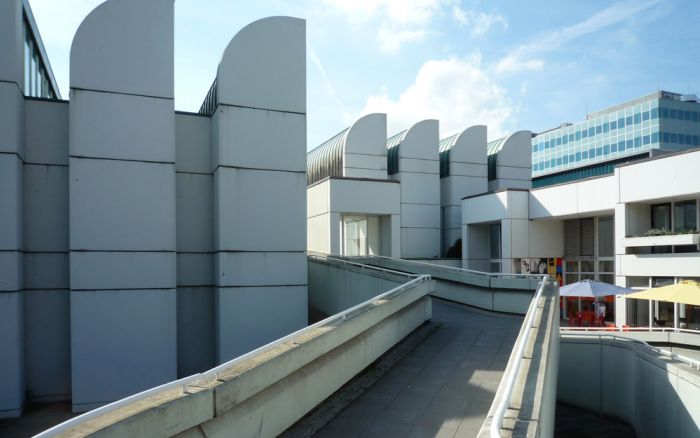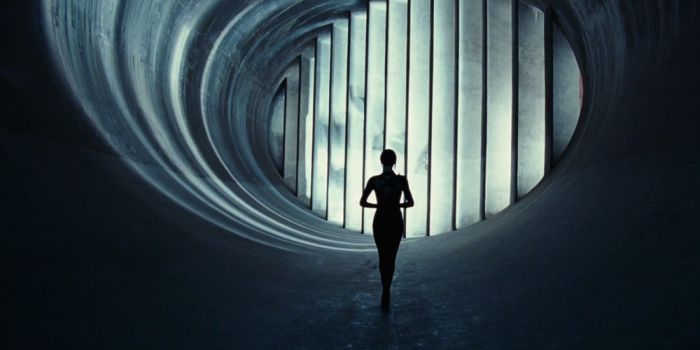Strategy’s Music Is the Music of the Future in My Dreams

There’s a lot of music out there that evokes shades of the future: the cyber-nostalgic sounds of Makeup & Vanity Set and Perturbator; the jazzy, trippy pop of Stereolab and Broadcast; the aggressive industrial of Front 242; the soaring synthpop of Covenant and VNV Nation. But for my tastes, minimal, dub-influenced ambient has always been the music I imagine people in some distant future are listening to (probably via some sort of neural-net interface).
But just what, exactly, is “minimal, dub-influenced ambient”? To some of you, it might sound like yet another one of my made-up musical genres, but it’s a real thing — according to AllMusic, anyway.
Coined by the Beyond label for its compilation series of the same name, Ambient Dub has since been generalized by artists, critics, and audiences alike to refer to any form of rhythmic, usually beat-oriented ambient using the tastes, textures, and techniques of Jamaican dub-style production (e.g. reverb, emphasis on bass and percussion, heavy use of effects). Although the term has fallen out of favor due to the fevered intermingling of styles characteristic of post-rave electronica, it remains useful in demarcating the denser, more electronic applications of dub from the more hip-hop derived styles of downtempo, atmospheric beat music.
The above description describes a wide range of artists. It can be applied to The Orb, Pole, Gas, Banco de Gaia, Marconi Union, Zen Savauge, and Echospace — even though none of them really sound like the others. Still, there are certain characteristics that permeate much of “ambient dub” music.
For starters, it tends be very spacious-sounding, with lots of reverb causing the beats and textures to fill the room and threaten to drift away. There’s often a curious blend of sensuality and sterile-ness to the music. It never tries to hide its electronic and artificial origins, but there’s an almost organic imperfection to its bubbling synthetic sounds and echoing beats. And finally, there’s an architectural sense to the music. By that I mean it sounds like music that could be heard piping through architectural spaces that look like the photo above, or these examples below.



I imagine some of you are probably wondering why anyone would want to listen to music that’s described as “sterile,” or that conjures up such… cold and intimidating spaces. I tend to listen to this music when I need to focus. At such times, I want music that is sleek and sterile and free of distractions, and yet more present and insistent than “pure” ambient music like Steve Roach. Which brings me to the music of Paul Dickow, aka Strategy.
I first became aware of Strategy’s music when a friend gave me a copy of 2004’s Drumsolo’s Delight. At the time, I found it noteworthy primarily because it was a Kranky release, and its electronic soundscapes were a far cry from the post-rock that Kranky had become known for (e.g., Godspeed You Black Emperor!, Stars of the Lid, Labradford).
Drumsolo’s Delight has remained my favorite Strategy release, and is often the first album I reach for when I’m about to embark on a coding or writing marathon. “Cascadian Nights” and “Final Super Zen” envelope the listener in richly layered sonics (e.g., sparkling synthesizers, beats layered in reverb so thick they seem almost non-existent, a distant industrial hum). And yet, for all of its sterile-ness, there’s still that sensuality at work, a certain intimacy that lends the music a starry-eyed sense of exploration and discovery. (If I were making a movie about urban explorers in the 26th century wandering through some recently discovered 20th century architecture, “Final Super Zen” would be the soundtrack.)
The aptly titled Future Rock (2007, Kranky) dials back on the ambience a bit, gives the music a bit more oomph, and gives the beats a greater presence. But there’s still a great deal to enjoy, from the staccato guitar licks on “Can’t Roll Back” to the way the title track’s rhythmic patterns ping-pong back and forth to the way “Red Screen” constantly spirals upwards towards some glorious epiphany.
Strategy’s most recent release, Seeds of Paradise (2015, Idle Hands) begins on an almost tribal note with the circling drums that begin “Blackberry’s Dream” but tracks like “Virtual America” and the title track find Dickow exploring the same minimal-yet-spacious electronic soundscapes heard on Drumsolo’s Delight.
I’ve often written about the sense of nostalgia, or to use C.S. Lewis’ term, sehnsucht as a method for identifying music that speaks to me. That is to say, the music that I return to most often is that which creates within me a yearning, a “nostalgia for an age yet to come,” to use this website’s tagline. An album like Drumsolo’s Delight does just that: it creates within me a yearning for a pristine future, one full of sweeping, graceful architecture and a sense of vastness and exploration.
In its best moments, Strategy’s music is music that I can lose myself in, not because it encourages me to turn off my brain or simply bliss out but rather, because it’s bubbling electronics and “sterile” soundscapes hint at depths and expanses to explore. That it often proves invigorating when I’m about to embark on a coding session at one in the morning is just an added bonus.